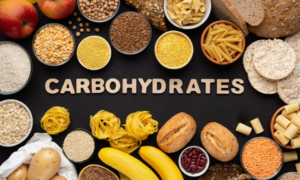Table of content :
- Introduction
- Calorie Calculation – Essential Elements
- Calculating the Number of Calories that Your Body Needs
- Calculating Calories from the Foods You Eat
- Calculating Calories that You Burn
- The Importance of Counting Calories
- Calorie Calculator – The Formula
- Harris-Benedict Formula for Women
- Harris-Benedict Formula for Men
- Calories in Common Foods
- Counting Calories Burned From Common Exercises and Physical Activities
- Calorie Calculation – Precautions
- Very Low-Calorie Foods
- Low-Calorie Foods
- Low to Medium Calorie Foods
- Medium Calorie Foods
- Medium to High-Calorie Foods
- High-Calorie Foods
- Conclusion
1. Introduction : Guide to Caloric Intake for optimal Health
- Our bodies require energy in the form of calories to carry out vital functions such as respiration, digestion, and circulation, as well as everyday activities like sitting, sleeping, and exercising. The food we consume provides us with this necessary energy, commonly referred to as calories. Calculating our calorie intake is essential as it helps us understand whether we are consuming too many or too few calories, which directly affects our overall health and body weight. Let’s explore the significance of calorie calculation and how it influences our well-being.
- To explain it simply, our bodies need the calories or energy to perform their vital functions like respiration, circulation, digestion, etc. and perform additional day-to-day activities such as sitting, sleeping, exercising, etc. The food we consumed by us provides the energy to our bodies and that energy is ‘calories’.
- It is important to calculate our calorie intake because counting calories helps you know whether you consume excess calories than your body needs or not consume enough calories. It is also an essential element in maintaining healthy body weight. An excess calorie consumption means that the calories get stored in the body as fats which is the major health issue now a days.
- On the other hand, not getting sufficient calories would deprive your body, which can also hamper your body’s regular functioning. Furthermore, the most crucial element regarding calorie calculation is calculating an estimate of calories that you need to function.
- In this artical we are going to understand the Counting calories is a valuable approach for managing weight, achieving health goals, and maintaining a balanced diet and also Understanding how to calculate calorie intake and expenditure can provide insights into achieving a healthier lifestyle.
- In this comprehensive guide, we will explore the essential elements of calorie calculation, including determining your basal metabolic rate (BMR), accounting for physical activity, setting weight goals, tracking calories from food, estimating calories burned through exercise, and the significance of counting calories.
2. Essential Elements of Calorie Calculation
- Consuming more calories than our bodies require leads to the storage of excess energy as fats. This can contribute to weight gain, obesity, and associated health issues. Calculating our calorie intake helps us identify and manage potential overconsumption, allowing us to make adjustments for a balanced and healthy diet.
2.1 Calculating the Number of Calories Your Body Needs:
- Determining your daily calorie requirement is a crucial step in managing your weight effectively. Several factors influence this calculation, including age, gender, weight, height, and activity level. By using formulas or online tools, you can estimate the number of calories needed to maintain, gain, or lose weight based on your individual circumstances.
- The body requires a certain amount of calories to perform basic activities. For example, your body needs calories to breathe, pump blood, digest etc.
2.2 Calculating Calories from the Foods You Eat:
- To effectively manage your calorie intake, it is important to be aware of the caloric content of the foods you consume. Nutritional information labels, online databases, and smartphone apps can help you determine the calorie content of various foods and beverages. Keeping a food diary or using a calorie tracking app can assist in accurately monitoring your daily calorie intake.
2.3 Calculating Calories That You Burn:
- Understanding the calories burned through physical activities is key to managing your energy balance. Different activities and exercises burn varying amounts of calories. Using online calculators or fitness tracking devices, you can estimate the calories burned during specific exercises or physical activities. This information allows you to tailor your workouts and optimize calorie expenditure.
3. The Importance of Counting Calories
- Counting calories plays a vital role in weight management, whether it involves losing, gaining, or maintaining weight. By tracking your calorie intake, you gain awareness of your eating habits and portion sizes, making it easier to make informed choices. Additionally, monitoring calories can help identify patterns or triggers that may affect your eating behaviors and enable you to adjust your dietary habits accordingly.
4. Calorie Calculator Formula
- Harris-Benedict Formula for Women:
- The Harris-Benedict equation is a commonly used formula to estimate daily calorie needs. It takes into account factors such as weight, height, age, and activity level. By plugging in these variables, you can calculate an estimate of your basal metabolic rate (BMR) and determine your total daily energy expenditure (TDEE).
- Harris-Benedict Formula for Men:
- Similar to the formula for women, the Harris-Benedict equation for men provides an estimate of BMR and TDEE based on variables such as weight, height, age, and activity level. This formula serves as a helpful tool for understanding the calorie requirements specific to men.
5. Calories in Common Foods
- To make informed choices about your diet, it is important to have knowledge of the caloric content of common foods. Various resources, including food databases, reference guides, and smartphone apps, offer comprehensive lists of calorie values for different foods and beverages. This information enables you to plan meals and snacks that align with your calorie goals.
- Refer to the trailing parts of the artical for the Calories get from the regular fruits, vegetables and dry fruits etc.
6. Counting Calories Burned From Common Exercises and Physical Activities
- Engaging in physical activities and exercises contributes to calorie expenditure. Understanding the calories burned during different activities allows you to select workouts that align with your goals and preferences. Whether it’s running, swimming, cycling, or engaging in team sports, various resources provide estimates of calorie burn rates for different activities.
7. Precautions in Calorie Calculation
- While counting calories can be beneficial, it is important to approach it with caution. Obsessive tracking or severely restricting calorie intake can lead to an unhealthy relationship with food. It is advisable to seek guidance from a registered dietitian or healthcare professional when establishing calorie goals to ensure they align with your individual needs and overall well-being.
8. The Bottom Line
Calorie calculation is a valuable tool for managing weight, promoting balanced nutrition, and achieving health-related goals. By understanding the essential elements of calorie calculation, including determining your body’s needs, tracking food intake, estimating calorie burn, and being mindful of potential pitfalls, you can develop a healthy relationship with food and make informed choices to support your well-being.
Certainly! Here’s the classification of the above content into categories based on calorie content per 100gm.
Very Low-Calorie Foods:
- Vegetable Foods:
- Cucumber (16 cal)
- Snake Gourd (24 cal)
- Cluster Beans (19 cal)
- Bottle Gourd (15 cal)
- Ridge Gourd (18 cal)
- Radish (16 cal)
Low-Calorie Foods:
- Vegetable Foods:
- Bitter Gourd (17 cal)
- Pointed Gourd (20 cal)
- Drumstick (36 cal)
- Fruits:
- Papaya (43 cal)
- Watermelon (30 cal)
- Guava (68 cal)
- Raw Mango (60 cal)
Low to Medium Calorie Foods:
- Vegetable Foods:
- Beetroot (43 cal)
- Carrots (41 cal)
- Fresh Turmeric (65 cal)
- Spinach (23 cal)
- Eggplant (25 cal)
- Fenugreek Leaves (49 cal)
Medium Calorie Foods:
- Vegetable Foods:
- Sweet Potato (86 cal)
- Pumpkin (26 cal)
- Tomatoes (18 cal)
- Bell Peppers (31 cal)
- Broccoli (34 cal)
- Fruits:
- Oranges (43 cal)
- Grapes (69 cal)
- Pomegranate (83 cal)
- Apple (52 cal)
- Cherries (50 cal)
- Banana (96 cal)
- Kiwi (41 cal)
Medium to High-Calorie Foods:
- Vegetable Foods:
- Sweet Corn (86 cal)
- Peas (81 cal)
- Potato (77 cal)
- Lentils (116 cal)
- Chickpeas (364 cal)
- Tofu (144 cal)
- Fruits:
- Mango (60 cal)
- Avocado (160 cal)
- Jackfruit (94 cal)
- Dry Fruits:
- Raisins (299 cal)
- Fig (74 cal)
- Coconut (354 cal)
High-Calorie Foods:
- Fruits:
- Mango (60 cal)
- Dates (277 cal)
- Dry Fruits:
- Pumpkin Seeds (559 cal)
- Sesame Seeds (573 cal)
- Almonds (576 cal)
- Pistachios (562 cal)
- Walnuts (654 cal)
- Cashews (553 cal)
- Peanuts (567 cal)
- Sunflower Seeds (584 cal)
- Watermelon Seeds (557 cal)
Please note that the calorie content mentioned above is approximate and can vary based on factors like size, ripeness, and variations in food products. It’s always beneficial to consider portion sizes and incorporate a balanced diet with a variety of foods.
The above data has been taken from the following references.
- National Institute of Nutrition (NIN), India
- United States Department of Agriculture (USDA) Food Composition Databases
9. Conclusion:
- Understanding the concept of caloric intake is vital for maintaining optimal health. Calculating our calorie needs helps us make informed decisions about our diet and ensures we provide our bodies with the right amount of energy. Whether we aim to lose weight, gain muscle, or simply promote overall well-being, monitoring our calorie intake empowers us to take charge of our health and make sustainable lifestyle choices.







